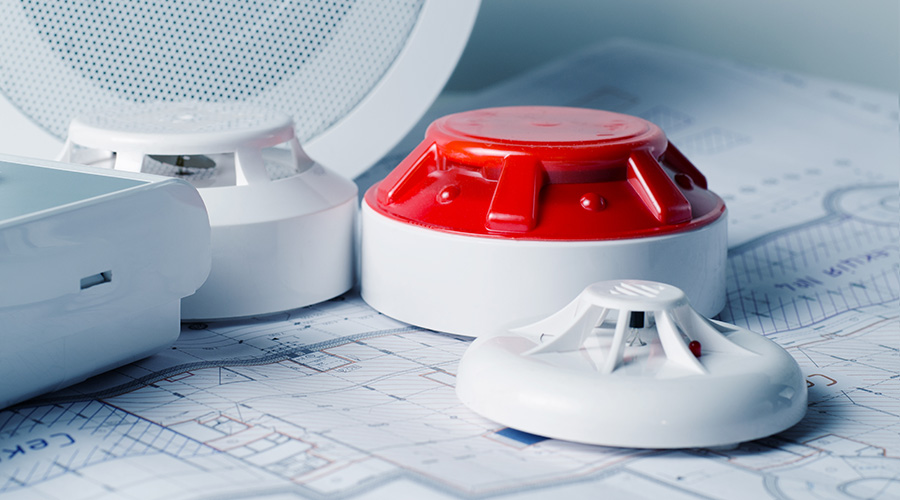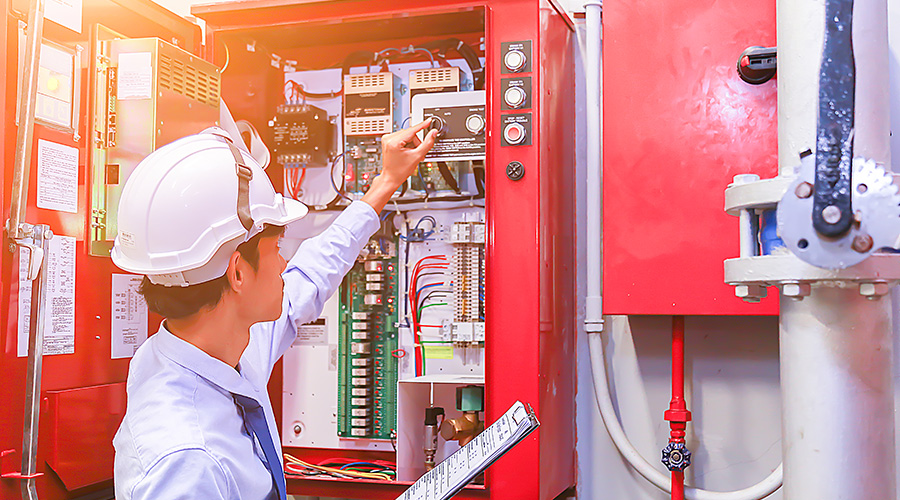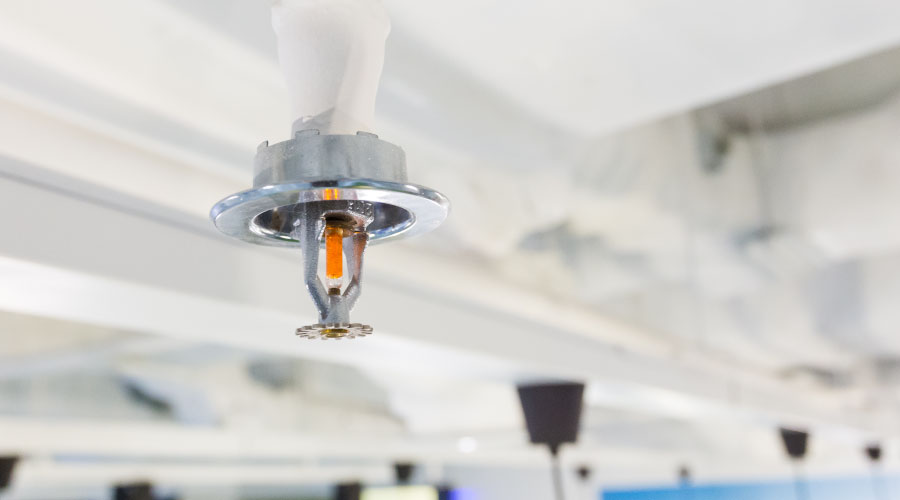Don’t Play with Fire: Avoiding Setbacks During Fire Safety System Retrofits
By Naomi Millán, Associate Editor
A fire safety system retrofit creates a situation with no room for errors and countless opportunities for them to happen. The average commercial high-rise fire safety system takes four years to retrofit. During that time, a multitude of different components must be tracked and managed to ensure that the overall system continues to function. Making matters even trickier is that the elements of the system are codependent, so that a problem with one component has the potential to cause a chain reaction of unforeseen consequences.
Mistakes and oversights during a fire safety system retrofit will add time, cost and frustration to an already long and complicated process. More importantly, they can imperil lives. While some setbacks are fairly unavoidable, the majority of trouble spots can be managed through careful planning and proper preventive maintenance.
R easons to Retrofit
Avoiding problems begins with understanding why the retrofit must be undertaken in the first place. Some reasons are obvious, such as an earthquake causing a partial building collapse that knocks out fire-alarm wiring. Or, during a renovation or building addition, the entire system might need to be brought up to code to match the new addition.
System components also simply come to the end of their useful lives. The power supplies wear out more quickly than the other components, says James Carrigan, supervising engineer with Syska Hennessy Group. The installed modules, like sensors and alarms, don’t normally wear out but have to be replaced due to vandalism or other damage, or manufacturer recommendation such as replacing smoke detectors every 10 years, he says.
One less obvious reason to retrofit is caused by the changing life span of fire safety systems. Originally, fire systems lasted 30 to 40 years or more, says Carrigan. They were hard-wired systems with hard-wired relay logic. From the 1980s on, with the rapid changes in technology, that life-span has been reduced to 15 to 20 years, Carrigan says.
As technological advances take product lines out of production, replacement parts also stop being made. Facility executives then have to decide how quickly to retrofit the system to something that can be more readily repaired. Facility executives can lean on their service provider to keep them up-to-date on such changes.
“The service company will be up to speed on what the manufacturers are doing, what is being taken out of production and what is backwards compatible,” Carrigan says. For this purpose, it’s good to have a service contractor who is also a vendor or distributor of the system, as they’ll be in the manufacturer’s information loop, Carrigan says.
Another reason to undertake a retrofit is a change in facility occupancy or use. When that change occurs, it is important not to assume the existing system will be sufficient for the new hazard, says Chris Jelenewicz, engineering program manager for the Society of Fire Protection Engineers. For example, converting an open office area to a storage area will require more fire suppression capacity due to the greater fuel load. “The storage situation will require a lot more water at higher pressure. The current sprinkler system might not be ready for that,” Jelenewicz says.
Or the facility could simply be very old with out-of-date though functioning equipment, such as 3⁄4-inch versus 1-inch pipes in the sprinkler system. Though the existing system might be functional and grandfathered into code, there might be a desire for a new state-of-the-art system.
Possible Pitfalls
Once the decision has been made to retrofit part or all of the fire safety system, the opportunities for setbacks are numerous. Many of these link directly to a lack of proper planning or a lack of proper maintenance.
It may seem obvious that a thorough plan of attack is crucial when undertaking any retrofit, but fire safety systems are so complex, it is difficult to keep the entire picture in mind. Poor planning can lead to problems with component compatibility.
“Sometimes facility executives can develop tunnel vision and only focus on one aspect of the system, like the sprinkler system,” says Jelenewicz. It’s important to think about how one system affects the others. “How will the new sprinkler system affect the fire alarm system? It’s always important to coordinate all the systems,” he says.
Incompatibility can cause the project to suffer from a “creep effect,” says Robert Solomon, National Fire Protection Association assistant vice president for building and life safety codes. For example, a project budgeted to replace 40 devices can creep into a more invasive project if wiring or the junction box must be replaced due to incompatibility.
“It’s almost easier to put in all new systems,” Solomon says. Due to how quickly technology advances, a system doesn’t have to be 40 years old to have compatibility issues, Solomon says. That problem could arise even with a system replaced as little as five years ago.
Because fire safety system retrofits are so costly, reusing existing system components, like wiring, is attractive. However, it is important to verify the adequacy of any existing system component. Suppose existing wiring is reused, and then the newly installed devices don’t work properly. The contractor who installed the new devices might claim that the problem is with the wiring, not the devices or the installation, says Carrigan. Also, taking the old devices off and putting the new ones on could require several days. During this time, auxiliary safety measures, like a fire watch, will be needed.
Assumptions in general cause problems during retrofits.
“Never assume that what was installed was designed correctly or that it meets code,” says Jelenewicz. This includes even the water supply. Especially if occupancy is changing, it is crucial to confirm that the existing water supply will provide enough water at the correct pressure. “Just because you’ve had it forever and it’s been sufficient in the past doesn’t mean that it will be so in the future. Be assured that it will be adequate,” he says.
Existing system adequacy is closely linked to proper preventive maintenance. Facility executives are pretty savvy now about protecting their investments through maintenance, and systems are now easier to maintain and test, but this was not always the case, Solomon says. As a result, there may be issues in older facilities.
For example, in an area serviced by well water, there is a greater chance for deposit build-up in the pipes. If these are not properly managed, flushing out the debris might be impossible and the pipes will have to be replaced. Proper preventive maintenance will cut down on the number of components that have to be entirely replaced.
In truth, the main components of the system, like the control panel, are usually in pretty good shape, says Jelenewicz. It’s the peripheral components that suffer from deferred maintenance. These include fire pumps, standpipes, pressure relief valves and auxiliary power.
The fire safety system touches almost all other systems in the building, Carrigan says. Items not up to code elsewhere could impact the fire system passing inspection. One example is if the elevator doesn’t recall or hasn’t been inspected on the proper schedule. Maintaining these auxiliary systems will ensure the retrofit passes inspection without any costly last-minute replacements or additional work.
The facility type itself can also provide unavoidable difficulties. If an unoccupied space is the easiest scenario for a retrofit, the most difficult is a hospital. Because hospitals are occupied 24/7 and full of people and systems that require extra care, proper coordination and pre-planning are crucial. Extra steps like dust barriers, tenting and HEPA vacuums can increase project costs, but these measures are essential. With more authorities inspecting the work, there is zero margin for error.
Prevention: The Best Medicine
To avoid being blindsided by problems, facility executives need a good plan. The first step is assembling the right project team. Hiring a professional engineering firm with experience in designing and installing fire/life safety systems is crucial. Facility executives should take the extra step to ask if the firm has that expertise in-house, says Carrigan.
Depending on the size of the project, a general contractor might be good to have on board to handle all the other items that need to be addressed as part of a retrofit, such as increased power, moving walls, patching and painting. A general contractor will be aware of, and able to fill, these needs, Carrigan says.
Two fire system contractors will be needed during the retrofit, one to take care of the existing system until it is taken offline and another to install the new system. Using only the new system installer can leave the existing system underserved.
“Sometimes facility executives think it’s okay to release their current service contractor from the annual service agreement once construction begins in order to save money,” Carrigan says. “Sometimes the new contractor can handle the maintenance on the old system, but they may not have the resources, especially if you’re switching system manufacturers.”
Early in the process, the team should conduct a building survey to come up with a deficiency list to identify what items in the building might be out of code compliance, a building codes and standards analysis so the team can fully address any code violations prior to inspection and a preliminary budget, Carrigan says. It’s an upfront cost, but cuts down on surprises later.
Reviewing all available data is also a good move. For example, all codes and standards have testing and maintenance requirements, for which there should be a record.
“Review the data to see if anything jumps out as being unusual,” Jelenewicz says. If during the main drain test for the last five years the pressure has only dropped 10 PSI and all of a sudden it jumps to 20 PSI, that’s a big hint something is wrong, such as a shut-off valve in the water supply.
Fire safety system innovations such as wireless technology or extended coverage sprinklers have made retrofits a little easier, but there is no substitute for doing one’s homework and anticipating as many problems as possible. By maintaining and verifying the adequacy of the existing system, designing for the proper use and occupancy of the facility, and double-checking the compatibility of new components, facility executives will go a long way to avoiding unnecessary headaches.
Related Topics:











